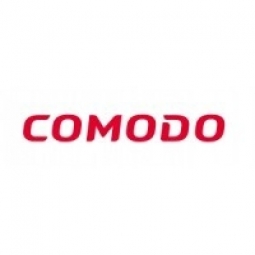技术
- 网络安全和隐私 - 安全合规
适用行业
- 电子商务
- 国家安全与国防
适用功能
- 质量保证
- 销售与市场营销
用例
- 租赁金融自动化
- 篡改检测
关于客户
Merchant-Accounts.ca 是一家创新的加拿大商业账户服务提供商,为加拿大中小型企业提供商业账户和信用卡处理解决方案。 Merchant-Accounts.ca 以客户为中心,提供专门的支持代表,通过构建、启动和营销电子商务网站的每一步为每个商家提供持续支持。通过与每个企业主密切合作,商家能够更好地获得最高水平的客户服务,获得尽可能低的费率,并开发一个高效的网站,从而充分发挥其电子商务业务的潜力。
挑战
Merchant-Accounts.ca 是一家加拿大商户账户服务提供商,在为其客户提供易于理解且经济高效的 PCI 合规解决方案方面面临着挑战。 PCI 合规性是在线零售商的一项新安全标准,技术上很复杂,Merchant-Accounts.ca 需要提供包含关键任务 PCI 扫描的解决方案。对于可能没有大量预算或专门技术人员的加拿大中小型企业来说,该解决方案必须负担得起并提供技术支持。此外,Merchant-Accounts.ca 希望降低客户迁移到其他服务提供商以寻找符合 PCI 要求的扫描提供商的风险。在与 Comodo 合作之前,Merchant-Accounts.ca 一直为其客户提供由 Visa 和 MasterCard 提供的认可扫描供应商列表。然而,事实证明这种方法是不够的,因为客户必须花费大量时间对不同的价格和服务进行分类,导致他们无法获得大量研究选项的支持。
解决方案
Merchant-Accounts.ca 与 Comodo 及其 HackerGuardian PCI 扫描合规解决方案合作。之所以选择 Comodo,是因为它是经批准的扫描供应商 (ASV)、拥有易于理解和可部署的解决方案、提供了在典型小型企业预算范围内的经济高效的解决方案、提供了可提供有效安全性的全面安全工具套件通过易于使用、直观的界面提供扫描和 PCI 合规性解决方案,并提供卓越的客户服务。 Comodo HackerGuardian 服务包包括 PCI 合规性,可提供所需的扫描,以满足电子商务存储客户数据和漏洞管理的严格标准,以确保服务器免受黑客攻击。 Comodo 的捆绑包价格为 79 美元,而其领先竞争对手的解决方案的价格却超过 1000 美元。
运营影响
数量效益

Case Study missing?
Start adding your own!
Register with your work email and create a new case study profile for your business.
相关案例.

Case Study
Data Capture for Afghanistan Forces
Electronic equipments on the field of Afghanistan provided information on the status of the vehicle and to identify potential threats surrounding it to the British Force. The monitoring and interpretation of this data requires robust and sophisticated digitization for data capture and communication.

Case Study
Digital Transformation of Atlanta Grout & Tile: An IoT Case Study
Atlanta Grout & Tile, a Tile, Stone & Grout restoration company based in Woodstock, Georgia, was facing challenges with its traditional business model. Despite steady growth over the years, the company was falling behind the web revolution and missing out on the opportunity to tap into a new consumer base. They were using independent software from different vendors for each of their department information and workforce management. This resulted in a lot of manual work on excel and the need to export/import data between different systems. This not only increased overhead costs but also slowed down their response to clients. The company also had to prepare numerous reports manually and lacked access to customer trends for effective business decision-making.

Case Study
Major Aerospace Company Automates Asset Management
The O&M division of an aerospace and global security company was using spreadsheets to manually track more than 3,000 assets assigned to students and staff. Maintaining audit trails for this high volume of equipment became increasingly time-consuming and challenging. The chore involved knowing precisely what equipment was on hand, what had been issued, its location and the name of the custodial owner of each item. Every aspect of this task was carried owner of each item. Every aspect of this task was carried out by individuals with spreadsheets. Manually documenting the full lifecycle of each asset added to the burden. This included tracking maintenance requirements and records, incidents and damages, repairs, calibrations, depreciation, and end-of-life data.

Case Study
Securing a Large Data Center in the EMEA Region: An IoT Case Study
A leading data-center operator in the EMEA region, with multiple facilities spanning over 25,000 square meters, faced significant security challenges. The operator experienced interruptions in their internal IT network due to unsupervised work of third-party technicians. Despite having a high-end building control system that provided 24x7 monitoring and control to all the building’s infrastructure, the data center was vulnerable from a cyber perspective as it was connected to the IT network infrastructure. The operator launched an urgent OT cyber security project that included both IT-OT network segmentation and OT network asset mapping and anomaly detection. The main objectives were to harden the security of the server systems, secure the facility’s power supply and server cooling system, strengthen the segmentation between building and operational systems, create a visual OT network map, and set up a system for presenting supply-chain attacks that may threaten the data center through equipment vendors’ maintenance activities.

Case Study
IFFCO Boosts IT Performance and Innovates Agriculture with Oracle Cloud
Indian Farmers Fertiliser Cooperative Ltd. (IFFCO), the world’s largest manufacturer and marketer of fertilizers in the cooperative sector, was facing several challenges in its quest to innovate and improve the livelihood of farmers in India. The organization had recently launched a new product, nano urea, which brought new demands to IFFCO’s cloud computing needs. The organization needed a reliable cloud vendor to support the processes of 6–7 new manufacturing plants during the upcoming year, enhancing its production capability 300–350 million bottles of nano urea to meet increasing demand. IFFCO’s cloud adoption was driven by a need to innovate. The organization wanted capabilities for a dynamic business that can adapt to the changing needs of the market while growing fast. However, it was inhibited by rigid on-premises data center deployments and the overhead of maintaining legacy systems. IFFCO wanted to apply the elasticity and availability of cloud for improving overall performance of applications at lowest possible operational overhead. Lastly, IFFCO needed to provide the benefits of its technology to all its stakeholders, including employees, members, transporters, and farmers, some of whom have limited literacy. To accommodate all stakeholders, IFFCO wanted to add a voice interface to its applications.

Case Study
Enhancing Security Precision with IoT: A Case Study of Guardsman Group
Guardsman Group, a leading security company in the Caribbean, faced a significant challenge in maintaining the security of its digital infrastructure. The company provides security equipment, personnel, and systems for various businesses across the region. However, one of its offices experienced a security incident that affected all communications at that location. The existing security tools were not sufficient to provide the necessary protection, and it took hours to identify the source of the issue. This incident highlighted the need for a dynamic solution that could proactively identify threats. The company's primary concern was any disruption to its business, as it manages a significant portion of Jamaica's money and cannot afford for its operations to go down.



